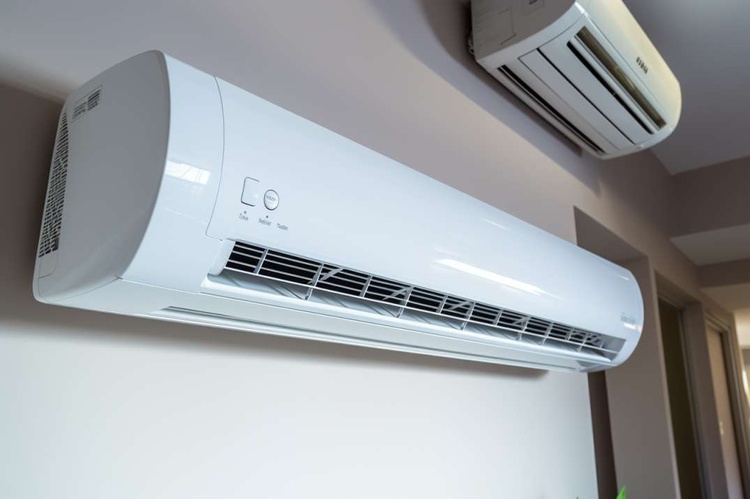Ductless Air Conditioning: Modern Cooling Solutions Explained
Ductless air conditioning systems, also known as mini-split systems, have gained popularity in recent years as an efficient and flexible cooling solution for homes and businesses. These systems operate without the need for extensive ductwork, making them ideal for retrofitting older buildings or cooling specific areas of a property. Ductless AC units consist of an outdoor compressor connected to one or more indoor air-handling units, providing targeted cooling where it's needed most.

How do modern ductless AC systems work?
Modern ductless AC systems utilize advanced heat pump technology to transfer heat from inside a building to the outdoors, effectively cooling the interior space. The system comprises two main components: an outdoor unit housing the compressor and condenser, and one or more indoor units containing the evaporator and air-handling mechanism. These components are connected by refrigerant lines and electrical wiring, typically requiring only a small hole in the wall for installation.
The indoor unit draws warm air from the room, passes it over cold evaporator coils, and then distributes the cooled air back into the space. Meanwhile, the outdoor unit dissipates the collected heat into the surrounding environment. This process is not only efficient but also allows for precise temperature control in individual rooms or zones.
What innovations are shaping the future of ductless air conditioners?
The future of ductless air conditioners is being shaped by several key innovations aimed at improving energy efficiency, user comfort, and overall system performance. One significant development is the integration of smart technology, allowing users to control their ductless AC systems remotely via smartphone apps or voice commands. This enhanced connectivity enables more precise temperature management and can lead to substantial energy savings.
Another innovation is the use of variable-speed compressors, which can adjust their output based on cooling demand. This technology allows the system to maintain a more consistent temperature while consuming less energy compared to traditional on/off cycling. Additionally, advancements in refrigerant technology are leading to the adoption of more environmentally friendly options with lower global warming potential.
How are energy efficiency innovations impacting ductless systems?
Energy efficiency innovations are having a significant impact on ductless air conditioning systems, making them increasingly attractive to environmentally conscious consumers and those looking to reduce their energy bills. One of the most notable advancements is the improvement in Seasonal Energy Efficiency Ratio (SEER) ratings. Many modern ductless systems now boast SEER ratings of 20 or higher, indicating exceptional energy efficiency compared to traditional central air conditioning units.
The development of improved heat exchangers and fan designs has also contributed to enhanced energy efficiency. These innovations allow for better heat transfer and air distribution, reducing the overall energy required to cool a space. Furthermore, the integration of occupancy sensors and learning algorithms in some models enables the system to automatically adjust its operation based on room usage patterns, further optimizing energy consumption.
What is the current cost landscape for modern ductless systems?
The cost landscape for modern ductless air conditioning systems varies depending on factors such as the system’s capacity, the number of indoor units, and the complexity of the installation. While the initial investment for a ductless system may be higher than that of a traditional window unit or central air conditioning system, the long-term energy savings and flexibility often make it a cost-effective choice for many homeowners and businesses.
To provide a clearer picture of the current cost landscape, here’s a comparison of some popular ductless AC systems:
| Product/Service | Provider | Cost Estimation |
|---|---|---|
| Single Zone 12,000 BTU System | Mitsubishi Electric | $3,000 - $4,500 |
| Dual Zone 24,000 BTU System | Daikin | $4,500 - $6,000 |
| Tri Zone 36,000 BTU System | Fujitsu | $6,000 - $8,000 |
| Quad Zone 48,000 BTU System | LG | $7,500 - $10,000 |
Prices, rates, or cost estimates mentioned in this article are based on the latest available information but may change over time. Independent research is advised before making financial decisions.
It’s important to note that these cost estimates include both equipment and professional installation. The actual cost can vary based on factors such as the complexity of the installation, local labor rates, and any additional features or accessories chosen.
How do ductless systems compare to traditional AC in terms of efficiency?
Ductless air conditioning systems generally offer superior efficiency compared to traditional central air conditioning units. This efficiency advantage stems from several factors inherent to ductless system design. First, the absence of ductwork eliminates the energy losses associated with air leakage and thermal transfer in ducts, which can account for up to 30% of energy consumption in central AC systems.
Additionally, ductless systems provide zoned cooling, allowing users to cool only occupied areas of a building. This targeted approach can result in significant energy savings compared to cooling an entire house with a central system. The variable-speed compressors found in many modern ductless units also contribute to their efficiency by maintaining a more consistent temperature with less energy use than the on/off cycling of traditional AC compressors.
In conclusion, ductless air conditioning systems represent a modern, efficient, and flexible cooling solution that is well-suited to a variety of applications. As technology continues to advance, these systems are likely to become even more energy-efficient and user-friendly, solidifying their place in the future of home and commercial cooling. Whether retrofitting an older building or seeking targeted cooling for specific areas, ductless AC systems offer a compelling alternative to traditional air conditioning methods.




